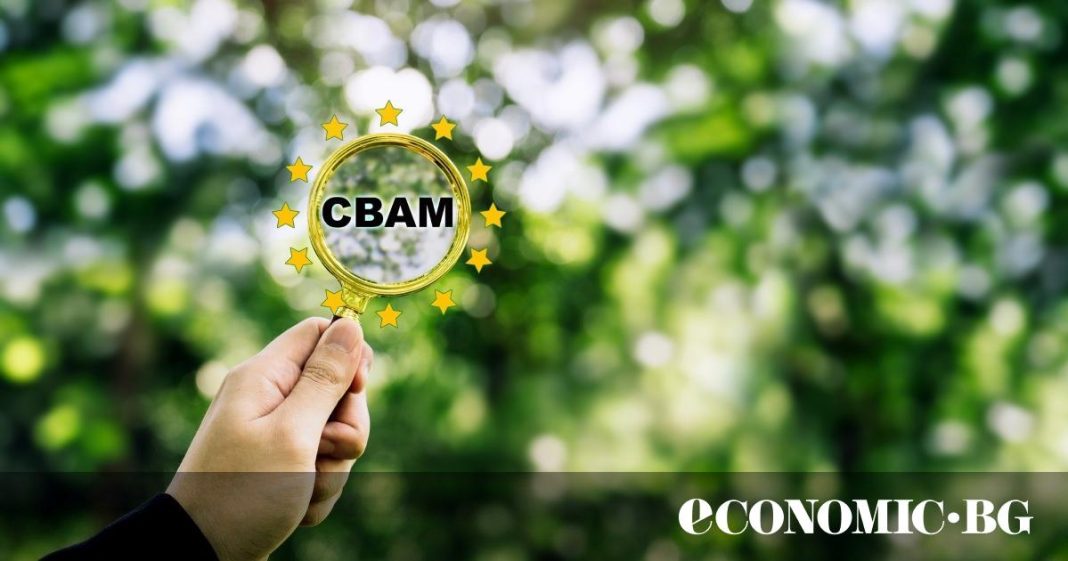In an effort to combat climate change and encourage its global partners to reduce their carbon emissions, two years ago the European Union approved the Carbon Border Adjustment Mechanism (CBAM). Under this mechanism, from the beginning of 2026, European importers of cement, iron, steel, aluminum, fertilizers, electricity, and hydrogen from non-EU countries will have to purchase so-called CBAM certificates. This ambitious regulation, often referred to as a “carbon border tax,” has sparked much debate about the potential winners and losers.
This ambitious regulation, often referred to as a “carbon border tax,” is sparking a lot of debate about who stands to gain and who stands to lose.
What is CBAM?
CBAM (Carbon Border Adjustment Mechanism) is a key element of the European Union’s Fit for 55 package, linked to the Green Deal and the achievement of climate neutrality.
In practice, it is a mechanism that aims to equalize the costs of imports from third countries of the above-mentioned products with the price that European manufacturers are required to pay for carbon emissions.
The idea is to prevent a situation where European companies move their production to countries with less stringent environmental regulations in order to avoid emission costs. Essentially, the CBAM imposes an equivalent carbon price on imported goods that have been produced in countries with lower or no carbon prices.
Think of it as a carbon duty. The aim is to ensure that the carbon price of imported products is equivalent to that paid for products produced in the EU under the EU Emissions Trading System (EU ETS).
When was it introduced and why?
CBAM was officially adopted and entered into force on May 17, 2023, with Regulation (EU) 2023/956. By imposing carbon prices on imported goods and products, CBAM encourages global industries to invest in cleaner production technologies and reduce their carbon footprint. This is a direct response to the EU’s ambition to become climate neutral by 2050 and to achieve an interim target of at least a 55% reduction in net greenhouse gas emissions by 2030 compared to 1990 levels.
What is the aim of CBAM and which sectors does it cover?
CBAM is being introduced gradually, initially covering the sectors listed below, which are also those with the highest carbon emissions.
In the future, the scope of the mechanism may be extended to other sectors.
Its main idea, apart from climate goals, is related to the competitiveness of European industry. For years, European companies have been under pressure from imports from non-EU countries such as China, Russia, India, Turkey, and others, which offer lower prices for their products. Europe’s competitiveness is of paramount importance, and the regulation seeks to level the playing field with competitors outside the EU.
Indirectly, it seeks to encourage third countries to adopt more ambitious carbon pricing policies and invest in green technologies so that they can access the European market.
Who, what, when?
The CBAM will be implemented in two stages. During the transition period, which began on October 1, 2023, and will continue until the end of this year, importers are required to report the emissions contained in imported goods without paying anything. This is a period for data collection and for companies to adapt to the new requirements.
The reports must include information on the quantity of imported goods, the actual greenhouse gas emissions (direct and indirect) during the production process in the country of origin, and any carbon tax paid in the country of origin.
From January 1, 2026, the so-called “permanent period” will begin. This is a key moment, as importers will now have to purchase so-called CBAM certificates to cover their import emissions. The value of these certificates will be linked to the average weekly price of emission allowances in the EU ETS. The value of these certificates will be linked to the average weekly price of emission allowances in the EU ETS.
According to Regulation (EU) 2023/956, revenue from CBAM certificates will be considered a “new own resource” for the EU, similar to revenue from the Emissions Trading Scheme. These funds will be used to: repay EU-wide debt drawn to finance the NextGenerationEU recovery plan; green policies under the Green Deal; partially cover the financing of the Just Transition Fund; and other sustainable mechanisms.
However, this is subject to review.
Winners and losers
The question of winners and losers is key. Importers of goods from third countries that do not have strict carbon policies will certainly be affected. These companies will face additional costs. This could lead to higher prices for end products for European consumers.
Energy-intensive industries outside the EU will also be affected. Manufacturers of iron, steel, cement, aluminum, fertilizers, electricity, and hydrogen that have not taken steps to decarbonize will face problems with their competitiveness on the European market.
According to a January 19, 2024, Euractiv article titled “Businesses fear carbon border tax will increase consumer prices,” European businesses are worried that even though the CBAM is meant to encourage decarbonization, it could lead to higher costs for end users. The article quotes representatives of associations who point out that if the additional costs of the CBAM cannot be borne by non-EU producers, they will inevitably be passed on to importers and, ultimately, to consumers.
On the other side of the coin are European manufacturers. They will be protected from unfair competition from importers with lower production costs due to a lack of environmental regulations. This could stimulate investment in local production.
Both within and outside the EU, companies that have already implemented or plan to implement low-carbon production processes will have a competitive advantage.
In the long term, CBAM has the potential to contribute significantly to reducing global carbon emissions by encouraging clean production practices around the world.
The situation in Bulgaria
In the context of these changes, Bulgarian businesses are also closely monitoring the development of CBAM. Ivaylo Georgiev, Executive Director of the Bulgarian Cement Association (BAC), shares his view:
This is one of the things we have been waiting for years to happen, because the cement industry is the most affected by imports from third countries. Imports into the European Union have been very high in recent decades, increasing alarmingly in recent years. We believe that this will level the playing field in terms of competitiveness,” Georgiev commented to Economic.bg.
According to him, the key moment in the implementation of the regulation is whether the risks of fraud can be minimized, i.e., whether importers will declare false data on cement imports and the emissions associated with their production.
When asked about potential price increases in the construction sector due to CBAM, Georgiev did not commit to a forecast, but pointed out that “there should be no inflation because cement plants in Bulgaria in particular have a lot of unused production capacity. If anything happens, it will be pure speculation.”
In Bulgaria, the Executive Environment Agency is responsible for the regulation and its implementation.
Our team will report on how the mechanism will work in our country in a follow-up article.
Although it poses a challenge for businesses and may have a short-term impact on prices, the long-term benefits for the climate and the promotion of more sustainable production practices are undeniable.
Its success will depend on effective implementation and the ability of all stakeholders to adapt to the new reality of carbon border pricing.
Translated with DeepL.
Източник: Economic.bg


